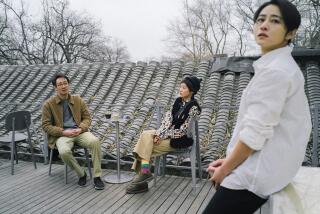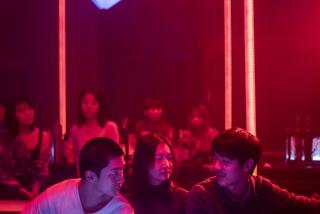Review: The subjects of ‘Chinese Portrait’ demand your attention
Imagine being in a gallery featuring photographs of regular, working class people. Some gaze intently at the camera as others appear unaware of being watched. Suddenly, an image moves. A gust of wind tousles someone’s hair or clothing, someone blinks or suppresses a smile, and you are outed as a voyeur.
That is exactly the experience of watching celebrated filmmaker Wang Xiaoshuai’s documentary “Chinese Portrait,” a series of fixed-camera tableaux shot on film and video over eight years throughout his homeland.
We tend to regard China’s population of 1.4 billion as either an economic behemoth whose cheap means of production fuels the voracious consuming habits of westerners or an existential threat wielding future-tech authoritarianism. The people, even in their multitudes, are often an afterthought.
Wang (“Beijing Bicycle”), however, foregrounds his subjects, composing in master shots and placing them against backdrops that are sometimes soothing but often bleak. As his camera peers out of the opening of a mine, takes in endless farmland, the gritty exterior of a factory or the interior of a train, we are greeted by groups of workers, families and travelers.
There is no narrative or context provided, but the long takes and static camera allow us to choose where to look and, slowly, individuals emerge, defined by stoicism, a tiny gesture or a furtive glance at someone else in the frame. Little happens, but as the camera lingers for minutes at a time, the people become fascinating.
There’s also something unsettling about that two-way mirror effect. Like locking eyes with a stranger for a little too long, something passes between viewer and subject. You remind yourself that in this case it is a cinematic illusion, but no less profound.
What little dialogue there is goes unsubtitled, which strangely makes the people on screen even more interesting. Wang makes great use of near-silence, relying on natural sound to accompany his images; no score, just the sounds of machinery, radios, loudspeakers, a singer and the wind to do the aural work in various settings.
Wang himself appears from time to time as a Waldo-like presence, if only to remind us that he actually visited these places and that there was someone who decided when to start and stop the camera. Reflected in its native language title (“My Lens”), “Chinese Portrait” is a personal reflection on the country’s past and present. Brimming with humanity, Wang’s contemplative, minimalist approach forces us to consider the day-to-day lives of these people, and perhaps our own.
‘Chinese Portrait’
Not rated
Running time: 1 hour, 19 minutes
Playing: Starts Dec. 20, Lumiere Music Hall, Beverly Hills
More to Read
Only good movies
Get the Indie Focus newsletter, Mark Olsen's weekly guide to the world of cinema.
You may occasionally receive promotional content from the Los Angeles Times.







